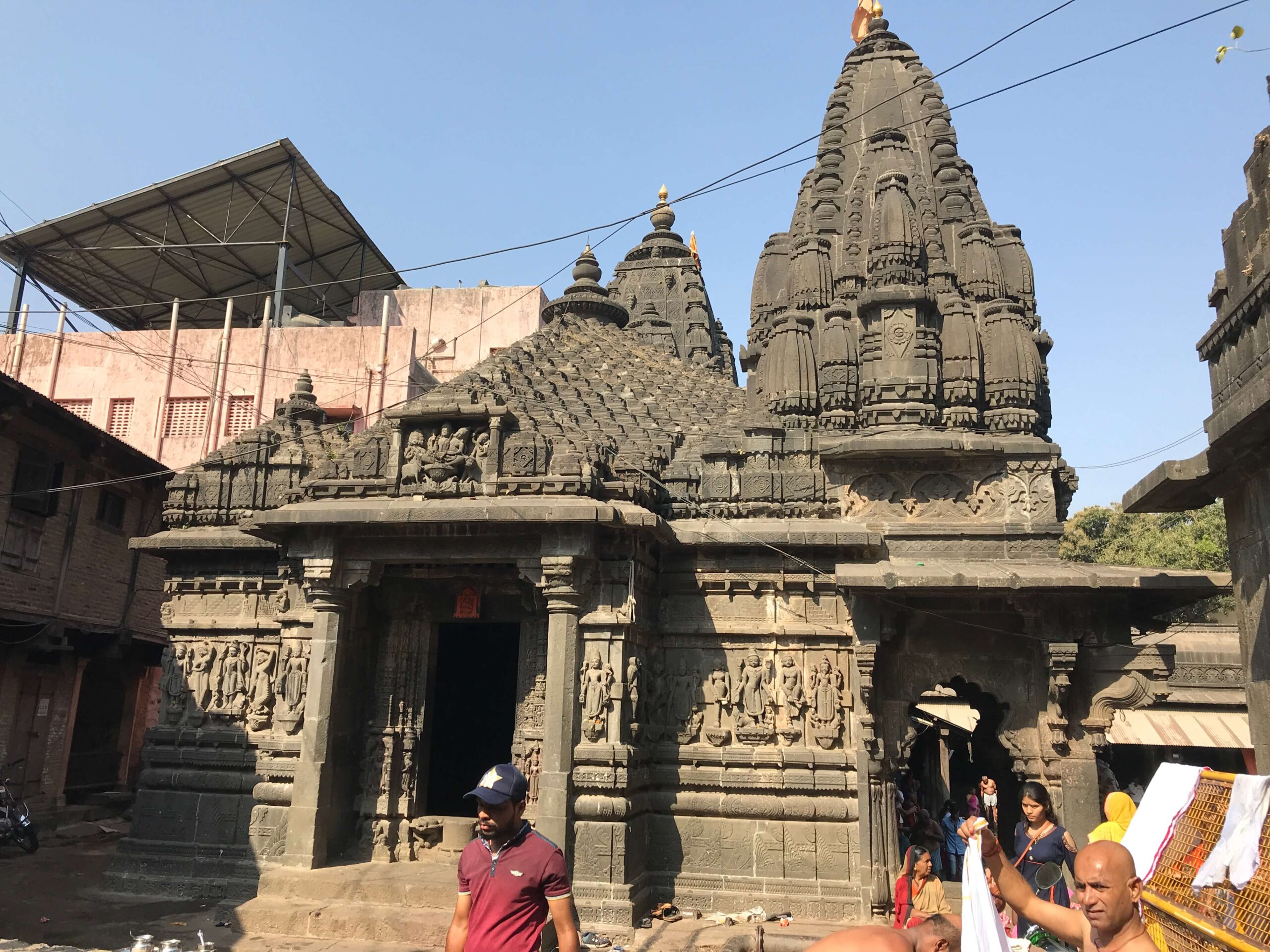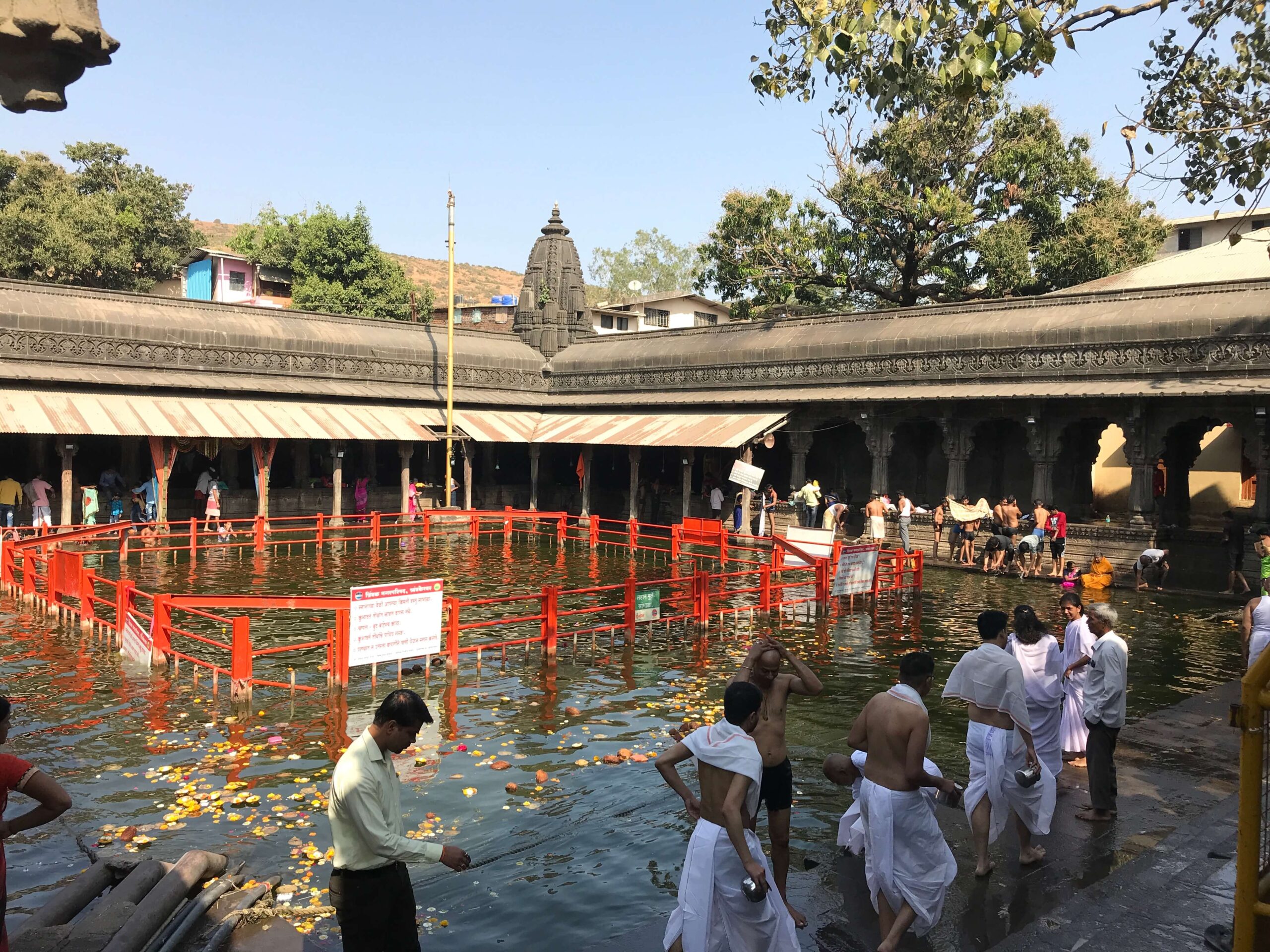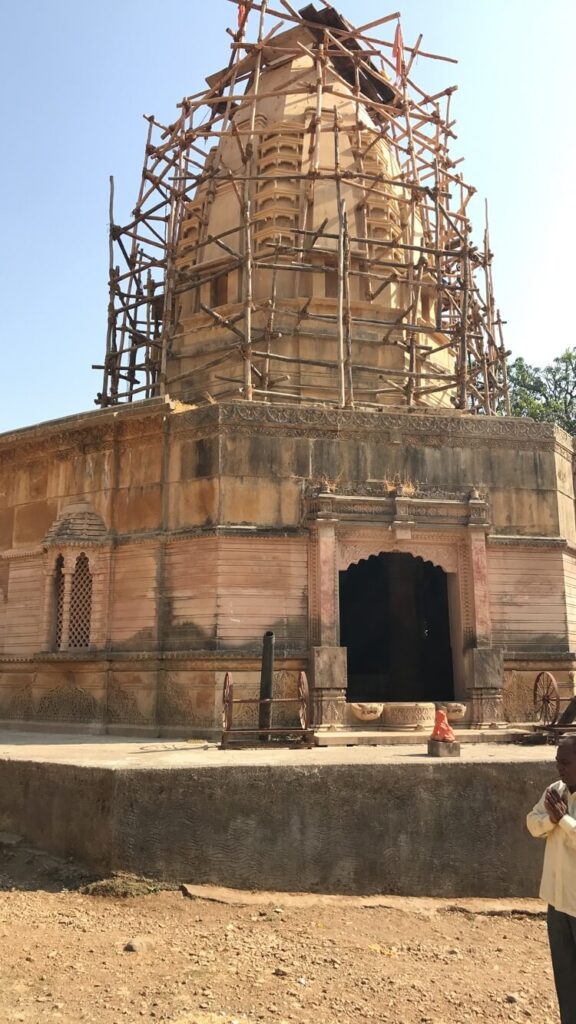 Trimbakeshwar Temple is a religious place that hosts one of the twelve Jyotirlingas. Trimbakeshwar is situated at the foot of Brahamagiri hill, which rises 3000 feet above sea level. Temple Trust looks after Trimbakeshwar Temple.
They built Shivprasad Bhakta Niwas, which has 24 rooms (2 bed, 3 bed, 5 bed), a conference hall, a lift, and hot water facilities.
Trimbakeshwar Temple is a religious place that hosts one of the twelve Jyotirlingas. Trimbakeshwar is situated at the foot of Brahamagiri hill, which rises 3000 feet above sea level. Temple Trust looks after Trimbakeshwar Temple.
They built Shivprasad Bhakta Niwas, which has 24 rooms (2 bed, 3 bed, 5 bed), a conference hall, a lift, and hot water facilities.
Insights about temple
The temple is surrounded by a 20-25 foot high stone wall. Photography is not permitted; you can not bring a camera inside but can bring a cell phone. They have two cameras/mobile lockers right in front of the temple’s main entrance (basically it’s just a shop that keeps your times). In one shop I paid Rs 10 to put my camera. The shoe stand is located next to the main gate (Rs 1 per pair). There is no need for autos since the temple is just a 10-minute walk from the bus stop. while moving towards the temple, there was this old man blowing and selling a flute and got captured in my cam. The entrance gate will guide you to the queue, which has a logical separation of roughly 6-7 lines. The queue of the main temple runs through the Nandi Temple, constructed before the Shiva temple (as you know Shiva temple always has Nandi Idol where Nandi always faces Shivalingam with an exception of Kapileshwar Temple in Panchavati where Nandi is not present at its place). Nandi Idol is seated on a platform made of white marble that is about a foot or two high. After passing through the Nandi temple, you enter the Shiva temple. From the inside, you enter a large hall with a dome-shaped roof. The sanctum is small and houses the main Shivlingam as well as three lings that live in a hollow building.
We could only see all three miniature lingams through the mirror I described earlier.
After passing through the Nandi temple, you enter the Shiva temple. From the inside, you enter a large hall with a dome-shaped roof. The sanctum is small and houses the main Shivlingam as well as three lings that live in a hollow building.
We could only see all three miniature lingams through the mirror I described earlier.
 Outside the temple just in front of the entrance gate, one can see few cows self-feeding the grass, there must be some story behind this which I didn’t bother to find out.
People were supposed to purchase fodder and need to feed these cows and also there are many smalls temples on roads and poor people’s houses.
Outside the temple just in front of the entrance gate, one can see few cows self-feeding the grass, there must be some story behind this which I didn’t bother to find out.
People were supposed to purchase fodder and need to feed these cows and also there are many smalls temples on roads and poor people’s houses.
Kushavarta

About Kushavarta
Gautama worshipped Lord Shiva at Brahmagiri Mountain for the Ganges’ down-flow in order to be free of the sin of gohatya. The wish was granted, and Goddess Ganges took the form of River Godavari, which flowed from Brahmagiri Mountain’s Kushavarta. This he did in order to take a holy bath in this water to atone for his sin of slaughtering a cow. Sheemant Rao Sahib Parnekar built the temple that stands here today around the stalled water. The walls within the hall are inscribed with various Idols, and there are small temples in each corner.History of Trimbakeshwar Jyotirlinga
This Shiva temple was built by the Prime Minister of the Maratha Empire, Peshwa Balaji Baji Rao, also known as Nana Saheb, in the mid-18th century. This temple’s reconstruction began in 1755 and was finished 31 years later in 1786.

 Trimbakeshwar Temple Mahashivratri Darshan Timings:-
Trimbakeshwar Temple Mahashivratri Darshan (Open) – 6 AM to 8 PM.
Darshan Timings of Trimbakeshwar Temple (normal days):-
Visit the Trimbakeshwar temple anytime between 5:30 AM to 9:00 PM.
Different Pooja Timings:-
The Special Pooja – 7:00 AM to 9:00 AM
The Madhyan Pooja – 1:00 PM to 1:30 PM
The Golden Crown of Shiva – 4:30 PM to 5:30 PM
Note –
1) Please keep in mind that the Trimbakeshwar Temple’s timings can differ on special occasions and during festivals.
2) While returning from Trimbakeshwar if you are not late and stretch your limits, I would suggest visiting Sula Vineyards.
Trimbakeshwar Temple Mahashivratri Darshan Timings:-
Trimbakeshwar Temple Mahashivratri Darshan (Open) – 6 AM to 8 PM.
Darshan Timings of Trimbakeshwar Temple (normal days):-
Visit the Trimbakeshwar temple anytime between 5:30 AM to 9:00 PM.
Different Pooja Timings:-
The Special Pooja – 7:00 AM to 9:00 AM
The Madhyan Pooja – 1:00 PM to 1:30 PM
The Golden Crown of Shiva – 4:30 PM to 5:30 PM
Note –
1) Please keep in mind that the Trimbakeshwar Temple’s timings can differ on special occasions and during festivals.
2) While returning from Trimbakeshwar if you are not late and stretch your limits, I would suggest visiting Sula Vineyards.




